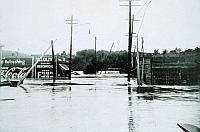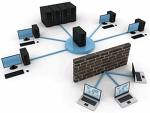 You are the IT network admin for your business and the day that you hope never comes is the point at which your key business data base gets corrupted due to an error. Your users are no longer able to manage their operations properly and are desperate for a quick resolution.
You are the IT network admin for your business and the day that you hope never comes is the point at which your key business data base gets corrupted due to an error. Your users are no longer able to manage their operations properly and are desperate for a quick resolution.
Then you find out that your IT network backup is not quite at the level you thought it should be. When you try to recover the information you find out the backup did not run cleanly and you have to go back a week to get clean data. The resulting double work is costly and may never replicate everything that happened in the lost time span.
Why did this happen? If you follow these simple rules you should be almost able to guarantee at 100% reliability this will not happen again.
-
Ensure that backup is run daily of all CRITICAL data to a solid internal second location. Commonly this is done to a NAS (Network Attached Storage) device or a secondary PC with a large hard drive capacity to store several copies of daily backups. The reason to do this is you can get access to this information quickly and it will be the fastest recovery location.
-
Ensure that a copy of all of the backup data is taken off site each day. This must be religiously followed, no exceptions and it must be available for quick access. This is your second level insurance that in the event that something happens that makes it not possible to access the internal copy (fire, physical damage, flood, access restriction due to problems with a neighbouring property...whatever) you have the ability to access your off site copy.
-
Use remote online backup to an external location to backup independently your most mission critical data files. This will commonly be billing records, maybe client data files, inventory etc. If this is primarily data based records the challenges of pipe line capacity will be lessened (usually the limiting factor for use of online backup, especially in Canada where pipeline costs are much higher than in some ofther jurisdictions). This backup is your more long term backup again designed to give insurance that the key info will be available over the long haul.
-
Use server snapshot software to capture true complete images of both data and configuration structures for all of your servers. This should be a daily piece and part of your internal and offsite backup. These images are harder to put into online backup but it can be done if the pipe capacity is available. This capability can go a long way to minimizing the recovery time and cost when there is a physical problem with a server. By using the snapshot you can recover on new hardware or on the same repaired hardware faster and more quickly. The cost of the software is much less than the recovery cost will be without it.
-
Consider important workstation backup as well. if your IT network design does not consider how users store personally generated files then you can inadvertently leave critical data unprotected. Know what your users are creating and design a protocal to capture their individual data as well as data stored in a server or centralized file storage.
-
Use server monitoring and reporting software to keep you apprised of your server performance. This type of tool is not costly but can give you automated early warning of problems which can affect your backup reliability. It could be disk capacity. It could be anti virus protection. It could be server event logs pointing to a potential corruption. It could be just knowing your backup has run.
-
TEST, TEST, TEST. A backup of any design is only as good as the ability to use the material when the problem arises. The morning of the flood is not the time to find out that the backup did not run correctly, or was not complete. You have to check this regularly and actually run a recovery from all levels of the backup on a periodic basis to know it will work when needed.
An IT network backup design will depend upon the available resources for the organization but with care and some planning it is possible to be ready to recover from problems.
How often do you do your IT network backup? Is it removed offsite? Has a recovery been tested? What else could be done to ensure better protection?
Lee K



